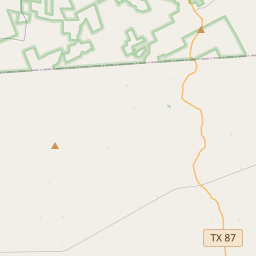The Survey Community
Historical marker location:






William Williams, an early 1800s Sabine Valley pioneer, obtained a large land grant in 1834 from the Republic of Mexico. His surveyed land attracted settlers, who called the location "The Survey". In 1847, Wade H. Mattox (1800-1863) built the first frame house in the settlement, using lumber hauled from Alexandria, LA., by a neighbor, Ezekiel Cobb (1825-1864). By the 1850s, the survey had settlers named Booker, Bush, Dade, Clark, Collins, Conner, Droddy, Garlington, Hardy, Joiner, Jones, McGee, Mitchell, Smith, Trotti, and Weeks. The economy was based on farming and (later) lumbering. At least 16 survey community residents fought for the Confederacy in the Civil War (1861-65).
In 1889, the Methodists built a church on land given by Mr. and Mrs. J. W. Mattox. The building was also used for school purposes. Surveyville Post Office, opened in 1903, was soon renamed "Mayflower".
Population shifts starting in the 1940s caused the school to consolidate with Burkeville (1949), the post office to close (1951), and the church to disband (1961). Public facilities, including the church building, Mattox Cemetery, and several other burial grounds, are now maintained by the Survey Cemetery Association
As one of the most visible programs of the Texas Historical Commission (THC), historical markers commemorate diverse topics in Texas history, including: the history and architecture of houses, commercial and public buildings, religious congregations, and military sites; events that changed the course of local and state history; and individuals who have made lasting contributions to the state, community organizations, and businesses.
In the late 19th century, Texas became known for its cattle drives, in which cowboys would move herds of cattle from Texas to railheads in Kansas and other northern states. The cattle drives were dangerous and difficult work, but they played a key role in the development of the American cattle industry.
In 1836, Newton County was officially established and named after John Newton, a hero of the American Revolutionary War. The county's geographical location, with its fertile land and proximity to major waterways, attracted many settlers, particularly from Southern states. The region's economy was largely based on agriculture, with cotton and timber being major industries.
During the late 19th and early 20th centuries, the discovery of oil and gas brought prosperity to Newton County. The oil boom transformed the county, attracting numerous oil companies, creating jobs, and boosting the local economy. However, the boom eventually declined, leading to a shift back to agriculture and timber as the primary sources of income.
Throughout its history, Newton County has been shaped by both natural and man-made disasters. The county has been prone to hurricanes and floods, with devastating effects on the community. In recent years, efforts have been made to implement flood control measures and improve disaster preparedness.
Today, Newton County remains a rural area with a population that values its rich history and natural beauty. It continues to be a place of agriculture, timber, and outdoor recreation, attracting visitors with its scenic landscapes and wildlife. The county's history and resilience serve as a reminder of the challenges faced by its residents and the strength of the community.
Newton County Timeline
This timeline provides a condensed summary of the historical journey of Newton County, Texas.
- 1846 - Newton County is established by the Texas state legislature.
- 1870s - The county experiences growth due to the expansion of the lumber industry.
- 1904 - A devastating fire destroys a significant portion of the town of Newton.
- 1907 - Bon Wier is established as a sawmill town.
- 1930s - The Great Depression brings economic hardship to the county.
- 1940 - The Toledo Bend Reservoir is constructed, resulting in the flooding of parts of Newton County.
- 1960s - The construction of the Toledo Bend Dam leads to increased tourism and recreational activities in the county.
- 1990s - Newton County experiences population growth due to its proximity to the Toledo Bend Reservoir.
- 2005 - Hurricane Rita causes significant damage to the county.